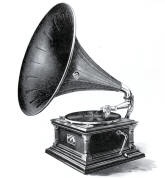Technically the ship's power isn't required, the old windup clocks will also do... just don't see them much anymore.
But like I said, try taking a checkride with a dead/disconnected one in the panel, maybe toss in a portable one... e.g. "I'm wearing a watch"... or "I duct taped this battery operated one to the panel"... and report back success rate...

Anyway, as it relates to batteries, it's just an example of "always on" stuff unless you dig around somewhere inconvenient and find the fuse feeding it and pull it.



